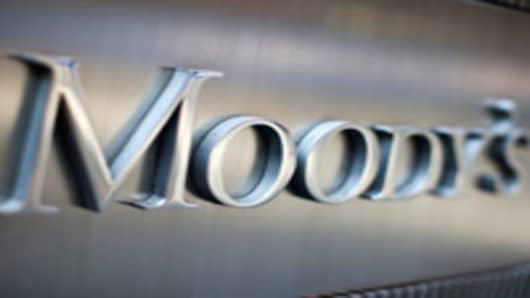Banks are braced for a fresh attack on their profit margins, if Moody’s presses ahead shortly with plans to downgrade short-term funding ratings sectorwide.
Investors see UK lenders, in particular Lloyds Banking Group and Royal Bank of Scotland, as most exposed to the risk of rating downgrades in coming weeks, with a combined 110 billion pounds of funding in short-term money markets.
Moody’s has put dozens of banks worldwide on notice of potential downgrades, with the latest implemented in Spain last week.
But most attention has focused on the 17 investment banks that the agency placed under review in February, of which six are also under threat that the short-term rating of either their holding company or the bank unit – or both – will be downgraded. The institutions affected are Morgan Stanley , Bank of America , Barclays , Goldman Sachs , Royal Bank of Scotland and UBS.
Most banks have spent the years since the onset of the global financial crisis in 2008 extending the maturity of their funding to avoid the mismatch that scuppered groups as diverse as Northern Rock and Lehman Brothers. But the commercial paper market – which allows banks to fund themselves flexibly for up to three months at a time – has continued to be a tempting source of cheap funding for those with the top-notch P1 rating.
Interest rates of Libor – the rate used for lending between banks – minus a few basis points are not unheard of for the best issuers these days.
“This is yet another setback for the banking industry,” said a top European bond investor, pointing out that the threatened downgrades from P1 to P2 would make most short-term issuance uneconomic. “It’s symptomatic of the laziness of the industry that so many banks have continued to be reliant on short-term funding.”
Yet analysts say most banks have prepared by accelerating their drive to rein in funding in the commercial paper market.
“Banks have significantly reduced their dependence on money-market funding and [have] bolstered liquidity reserves, in our view,” Kinner Lakhani, analyst at Citigroup, wrote in a recent note.
Lloyds and RBS, in common with other banks, said they had ample liquidity reserves to handle any downgrade. Some banks have already begun aggressively to shrink their reliance on short-term funding in recent months, anticipating a downgrade.
UBS cut its funding in the commercial paper market by another $13 billion in the first quarter alone, bringing it down to $38 billion at the end of March. This is comfortably covered by its liquidity buffer of 23 percent of its balance sheet. “Although the banks are clearly well-positioned to manage funding outflows from a potential downgrade, [but] his scenario clearly ‘narrows’ funding sources,” said Mr Lakhani.
“Terming-out” funding – the process of extending the maturity of a bank’s funding profile – also makes it more expensive, squeezing net interest margins, banks’ important revenue generator.


